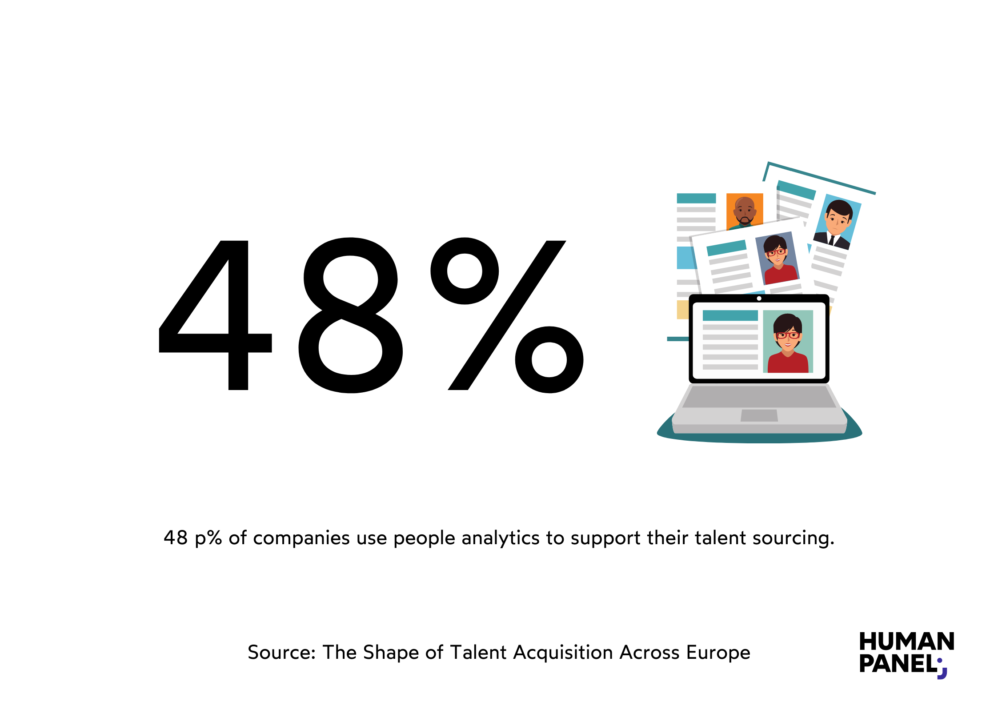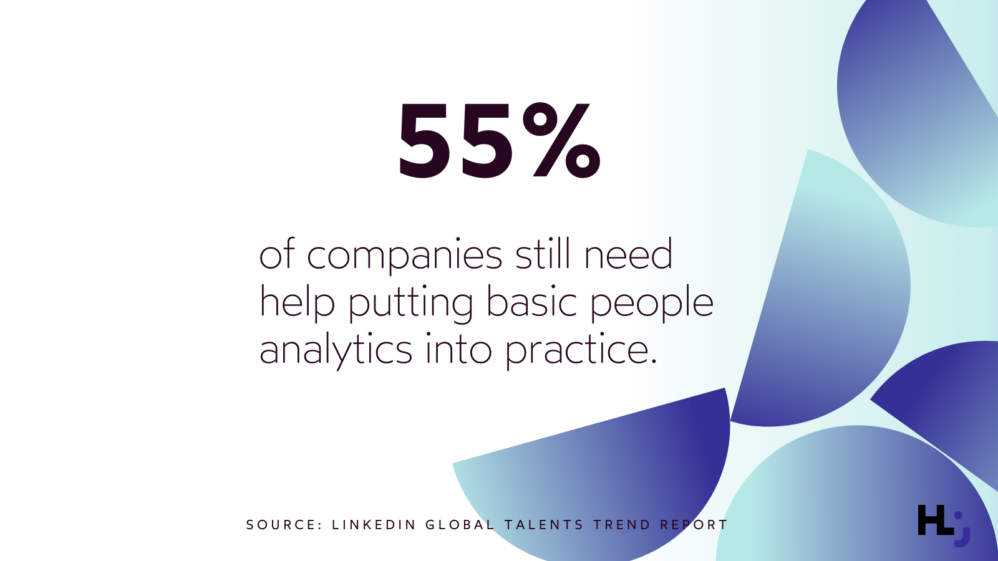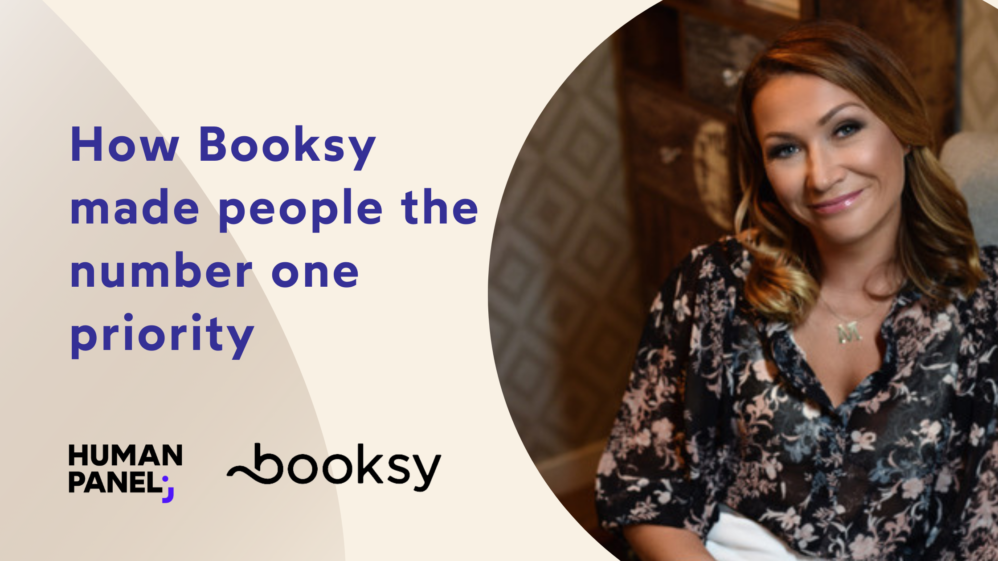The business value and benefits of people analytics [EXAMPLES]

You have probably heard or read about the benefits of people analytics. Your colleagues say it adds value to your business, but what does that mean exactly? Let us take a look at the true and tangible insights it can deliver.
HR teams have long struggled to make decisions about people without data to back up their claims. People analytics changes that. It gives HR teams access to all sorts of data. The core HR metrics include employee engagement rate, turnover rate, and cost per employee. With this data, HR teams can make decisions based on what is best for the business, not what they think is best.
“People analytics is valuable business intelligence for any organization. It facilitates the decision-making process by providing information about employment trends and employee behaviors,” says Alex Kouchev, founder of Profiad Talent. His consulting agency helps companies design and put in place their HR processes throughout the employee lifecycle – from onboarding to offboarding.
The benefits of people analytics
People analytics helps companies identify and assess the skills, abilities, and potential of their employees. It does so by enabling them to make data-driven decisions about their people.
“It’s a great way for managers to make informed decisions about hiring, salaries, performance evaluations or processes that impact engagement or turnover rates,” says Alex Kouchev.
People analytics allows companies to approach people management with more nuance and depth than ever before.
Alex Kouchev
“By analyzing employee data on a macro and individual level, HR analytics helps make HR more personalized, while increasing company motivation,” comments Alex Kouchev.
Other benefits of people analytics include:
Getting rid of frustration and guessing. People analytics is a science – not a gut feeling – that supports your decisions.
Making you alerted about people issues you might have otherwise missed. They may include higher turnover in a particular group or team.
Helping you close the gap around business acumen. This way, HR can finally build a strategic vision instead of spending time on operational tasks.
Helping you manage your HR through measurable KPIs and predict the ROI of your HR investments.
Showing you what drives human capital excellence and ROI and how to measure and predict those drivers.
Making sense of your employee data. You know what to focus on and how to understand the insights you get to make a better sense of data and act on it.
People analytics in HR processes – examples
In terms of HR processes, the benefits of people analytics include:
Better employee retention and lower turnover.
Thanks to data analysis, Netguru was able to identify the reasons for the turnover of its senior employees. The company decided to offer them a significant salary increase. Thanks to that, it was able to retain its best talent.
Global information company Nielsen developed a predictive model for retaining key talent.It found that it could retain 40 percent of these so-called “flight-prone” employees and increase the likelihood of them staying by 48 percent when it targeted at-risk talent.
Tip: If you do not know how to calculate your turnover rate, check out the personalized solution we offer at Human Panel. Sign up for a free demo and see how to get the most out of your HR data.
Identifying the best sources of quality candidates.
Thanks to HR data analytics, a chatbot provider Tidio was able to identify the best sources of talent for the growing IT team. “None of our job postings are random – where we post them is not random either. We track and measure conversion rates and can determine which sources bring Tidio the best candidates who are successful in their careers,” said Paulina Urban, Tech Talent Acquisition Specialist at TIdio.
As she pointed out, data analytics is critical because it helps optimize costs and avoid ineffective talent acquisition. “This way, we acquire fewer resumes, but they are a much better fit,” she added.
Technology provider Hirevue claims its algorithms are so good that they find salespeople who make 15 percent more revenue than traditionally placed employees.

Building stronger company culture.
At mobile tax app Taxfix, regular culture surveys serve as a sort of heatmap of the entire organization. They show which teams are doing fantastic work and which may be struggling. This way, HR immediately knows where to invest time and resources to investigate the problem, define an action plan, revise it, and even change the entire roadmap.
“We are seeing leaders, managers and teams make fantastic turnarounds in people management thanks to data. Some of them have really turned their results around in a very short time. The data has helped them move forward with their teams. I can say that this is the main pillar of how we take action based on numbers,” said Marie Toby, Head of People and Operations at Taxfix in an interview with Human Panel.
Increasing the efficiency of your recruitment funnel.
A digital marketing agency Tribe47 has developed an innovative recruitment strategy that has helped the company position itself in the digital marketing market. Instead of sifting through CVs, Tribe47 decided to create their own tasks that test applicants’ skills in practice.
A financial services company Qonto used to schedule an interview immediately after the competency tests stage of their recruitment process. The conversion rate at this step was over 90%, which meant that their strategy was inefficient and time consuming. They decided to make tests optional and only when requested by the candidate.
PostNL, a Dutch postal company, used people analytics to create the ideal profile of a mail carrier. Thanks to this analysis, PostNL was able to optimize its hiring process and reduce its hiring costs. The company is now able to target the right people for the job from the start.

Achieving fair compensation.
The analytics firm The Brew found that engineers who received a 12 percent pay raise at a large company it worked with were retained 15 percent more than those who received only a 5 percent raise.
Optimizing training models and assessing employee learning.
A subsidiary of a large Dutch FMCG retailer used people analytics to examine the impact of training and development investments on business results. The researchers found that training a shop’s employees had a positive impact on that shop’s financial performance. After one year, for example, the return on investment of training was more than 400%.
Increasing diversity within the organization.
Thanks to data analytics, leading ride-sharing company BlaBlaCar was able to increase diversity rates on its teams. They evaluated job descriptions to identify biased wording and structured their interviews to ensure they treated everyone equally. Today, they use specific scorecards and a set of skills that are clearly defined for each role.
Improving engagement and productivity.
Retailer Clarks used people analytics to analyze the relationship between engagement and business performance. They found that a 1% point improvement in engagement equates to a 0.4% increase in business performance, as measured by financial sales.
Better structuring of our onboarding process to reduce time to productivity.
When software company NeuroSys began working exclusively remotely, it noticed a drop in satisfaction after onboarding. After thorough research and data collection, the onboarding process was redesigned and communication improved. Today, 91% of employees who were satisfied with the onboarding process stay with the company longer.
The ROI for people analytics
Now that you know the benefits of people analytics, you may be wondering what the return on investment is after implementing a people analytics solution. One of the top people analytics experts, David Green, proves – citing Nucleus Research – that the return on investment for analytics is $13.01 for every dollar invested.
“With the advent of Big Data, HR data is one of the most valuable sources of information for any organization. Lawmakers around the world are demanding more transparency from companies when it comes to human resource management. The demand for accurate and detailed information is higher than ever,” says Alex Kouchev.
Obviously, people analytics is a tool that helps achieve the desired outcomes, not the solution itself. Context is everything. There is no magic formula that will solve each of your company’s problems. HR metrics will give you answers – but you need to ask the right questions first. If you’re curious to know what HR data points you can correlate with people analytics, sign up for a free demo with Human Panel.
You can also take a look at the complete list of Human Panel features.



